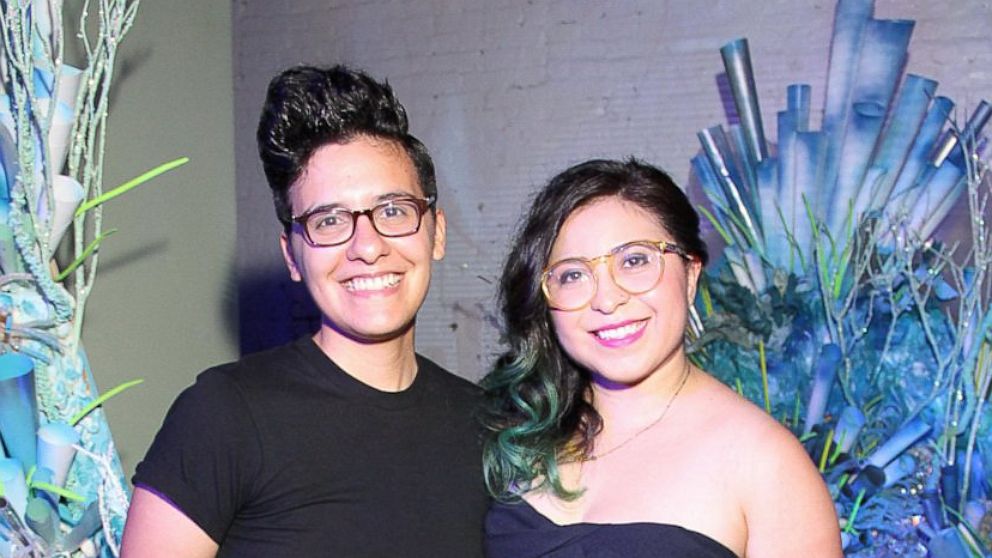Brooklyn-Based Label Marimacho Brings Reality to the Runway
We talk diversity, sample sizes, and fashion's future with Marimacho

Sept. 09, 2013— -- For all that it can be (and is) a showcase for the world's most innovative designers, New York's Fashion Week can also feel repetitive and, by design, exclusive. There are a variety of bodies, income levels, and subcultures consistently overlooked and ignored by fashion's most celebrated design houses. But this doesn't mean there aren't labels that are keeping a more diverse crowd of fashionable people well dressed and on-trend. One of those labels is Marimacho, a line by Brooklyn-based duo Crystal González-Alé and Ivette González-Alé catering to the "unconventionally masculine."
On Saturday, Marimacho showcased its Spring/Summer 2014 collection, inspired, the designers shared, "by the ocean and its possibilities for renewal and reinvention."
"When we think of submerging into the ocean," they explained in an email exchange with Fusion, "we think of a baptism of sorts -- reemerging with a sense of hope and possibility. And that is what queer people do -- reinvent themselves and emerge transformed. The clothing itself draws from an ocean color story of corals, algae greens, sea foams and deep blues. The collection plays with opacity and transparency through sheer silks and mesh to show the fluidity of gender even within a masculine aesthetic."
The collection presented light-weight suit jackets paired with shorts and trousers and crisp button-downs in shades of coral and navy, punctuated by bold stripes and a hint of sheer fabric. Models walked down the runway barefoot underneath installations of seaweed and balloon bubbles. Their unique looks -- white-accented, often asymmetric hairstyles coupled with glowing skin -- were the handiwork of Cesar Ramirez for Davines and Karlo Karlo for Emani Vegan Cosmetics. The models themselves offered a departure from the average Fashion Week runway -- they included people of different races and ethnicities, cis women and men, trans women and men, and genderqueer folks.
I asked Crystal and Ivette why, despite the diversity of body types, there was a conformity in body size. Their response gave much insight into how the call to include a broader spectrum of sizes isn't as simple as hosting a casting session:
"To understand the difficulty of including a variety of body sizes in a runway show," they explained, "it is helpful to have a bit of background on the garment development process. We typically start with a sketch, move to pattern development, and then sew a sample. After a handful of iterations, a final sample is made. Our sample size is approximately a women's 4-6 (we just call it a 'small'). This is a fairly typical sample size. Being somewhat in the middle of the size range allows for more accurate grading, which is the process by which a pattern is scaled up or down to create a range of sizes. If time and resources allow, we will create a size run---a sample of each size allows us to make adjustments to particular sizes where standard grading is not enough. Once final patterns are approved at each size, we can go to production."
"All of the items presented during our runway show are final samples in our sample size," they said. "There are two reasons for this 1) we did not have the time or resources to create a full size run of each garment (there are 30 pieces in the collection!) 2) we needed the flexibility of being able to place any garment on any model. While hair, makeup and styling concepts are discussed and tested before the show, changes are made the day of. Models that were supposed to wear one piece may end up in another. If models are different sizes, this cannot be done unless you have a full size run of each piece with you at the runway show."




